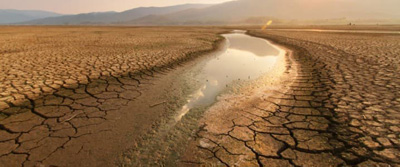Solar Pumps Poised to Revolutionize Global Water Access
Felicity Bradstock
 As the use of solar technology expands, the rollout of solar-powered water pumps is expected to significantly enhance the availability of safe drinking water around the world. Groundwater – the water stored in between rocks underground – contributes almost 99 percent of the unfrozen fresh water found on Earth. In Africa, where many do not have access to clean drinking water, there is thought to be around 20 times more groundwater than that in lakes and reservoirs. And yet many countries across the continent experience severe water scarcity, with many communities lacking the equipment needed to access the water located just a few metres underground. As the use of solar technology expands, the rollout of solar-powered water pumps is expected to significantly enhance the availability of safe drinking water around the world. Groundwater – the water stored in between rocks underground – contributes almost 99 percent of the unfrozen fresh water found on Earth. In Africa, where many do not have access to clean drinking water, there is thought to be around 20 times more groundwater than that in lakes and reservoirs. And yet many countries across the continent experience severe water scarcity, with many communities lacking the equipment needed to access the water located just a few metres underground.
Around half of the world’s population currently relies on groundwater for drinking, demonstrating the huge potential of tapping into this supply in other regions. It is much more reliable than surface water during times of drought, making it a critical water source on a warming planet.
Scientists have long discussed the potential of rolling out solar-powered water pumps in areas that lack access to clean water to support community needs, including providing access to drinking water and water for crop irrigation. Solar water pumps are accompanied by a set of solar panels that convert the sun’s rays into electricity to operate the pump. Pipes then transport water from the source to wherever it needs to go, such as a purification system or holding tank. Installing solar water pumps in rural, arid regions can help communities gain access to lifesaving drinking water, as well as expand agricultural activities to grow food.
Projects of this nature are attracting increasing interest as there is great potential to change the lives of millions using new clean technologies. Projects are gaining traction at a time when mapping groundwater across the African continent is easier than ever. This is a topic that is set to be discussed at the International Association of Hydrogeologists’ (IAH) World Groundwater Congress in Davos, Switzerland this week.
However, scientists are concerned about the potential downfalls that could come with the rollout of solar pumps, which must be mitigated to ensure projects are successful. One challenge is the potential overexploitation of the solar system, which could lead to the depletion of already scarce water sources. This is of particular concern in arid locations in parts of Asia, the Middle East and the U.S. In addition, this technology cannot be used in all regions of Africa, particularly in rural communities situated on top of ancient rocks where water is harder to access.
To avoid overexploitation, scientists suggest that handpumps and low-yielding solar-powered pumps should continue to be used alongside large solar pumps. This equipment can help communities gain access to drinking water while avoiding the depletion of the water source. Meanwhile, low-yield solar-powered pumps can be used in locations where water yields are low, allowing the water to be pumped throughout the day and stored for use as needed.
Professor Alan MacDonald, the head of groundwater at the British Geological Survey explained, “I would invite everyone to see this “solar groundwater pumping revolution” in terms of equity. Through that lens, we have the chance to ensure that this precious resource is sustainably and fairly unlocked to all those who are still waiting for a safe and reliable water supply.”
In India, solar-powered water access is already a reality for many. By 2026, an estimated three million or more farmers will be using solar pumps for irrigation purposes. This is expected to transform the lives of farmers across the country. However, scientists worry that water depletion could become a very real issue soon. Rajasthan, a desert state in India, has the greatest number of solar pumps of any state. The government has been offering subsidised solar pumps for around a decade, providing these pumps to nearly 100,000 farmersin the state. This equipment provides irrigation water for over a million acres, increasing the water for agricultural use by over a quarter. However, as the state gets little rain, these water sources are rapidly depleting and not being replenished fast enough.
Many pumps across the region no longer have access to water, as the underground rocks are dry down to 400 feet below ground, further than the pumps can reach. This has led to many pumps being abandoned and farmers once again facing water scarcity. Some farmers have purchased more powerful pumps, leaving poorer farmers to go without water or having to buy it from rich neighbours.
While there are major challenges to address when considering the widespread rollout of solar-powered water pumps in arid areas of the world, they could provide the green infrastructure needed to ensure millions of people have access to clean drinking water. Greater investigation into how to limit the output of these pumps or use them alongside other technologies could support the deployment of such equipment.
By Felicity Bradstock for Oilprice.com

Felicity Bradstock is a freelance writer specialising in Energy and Finance. She has a Master’s in International Development from the University of Birmingham, UK.
oilprice.com
| 

